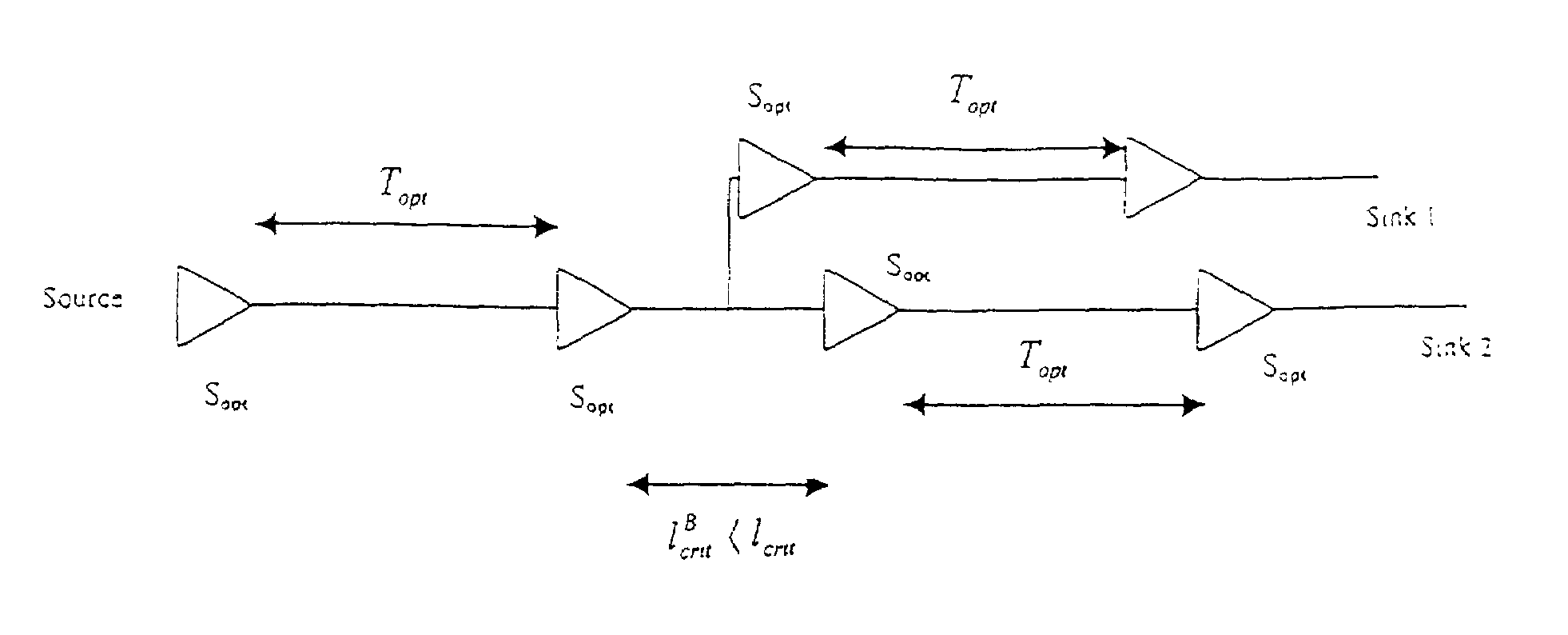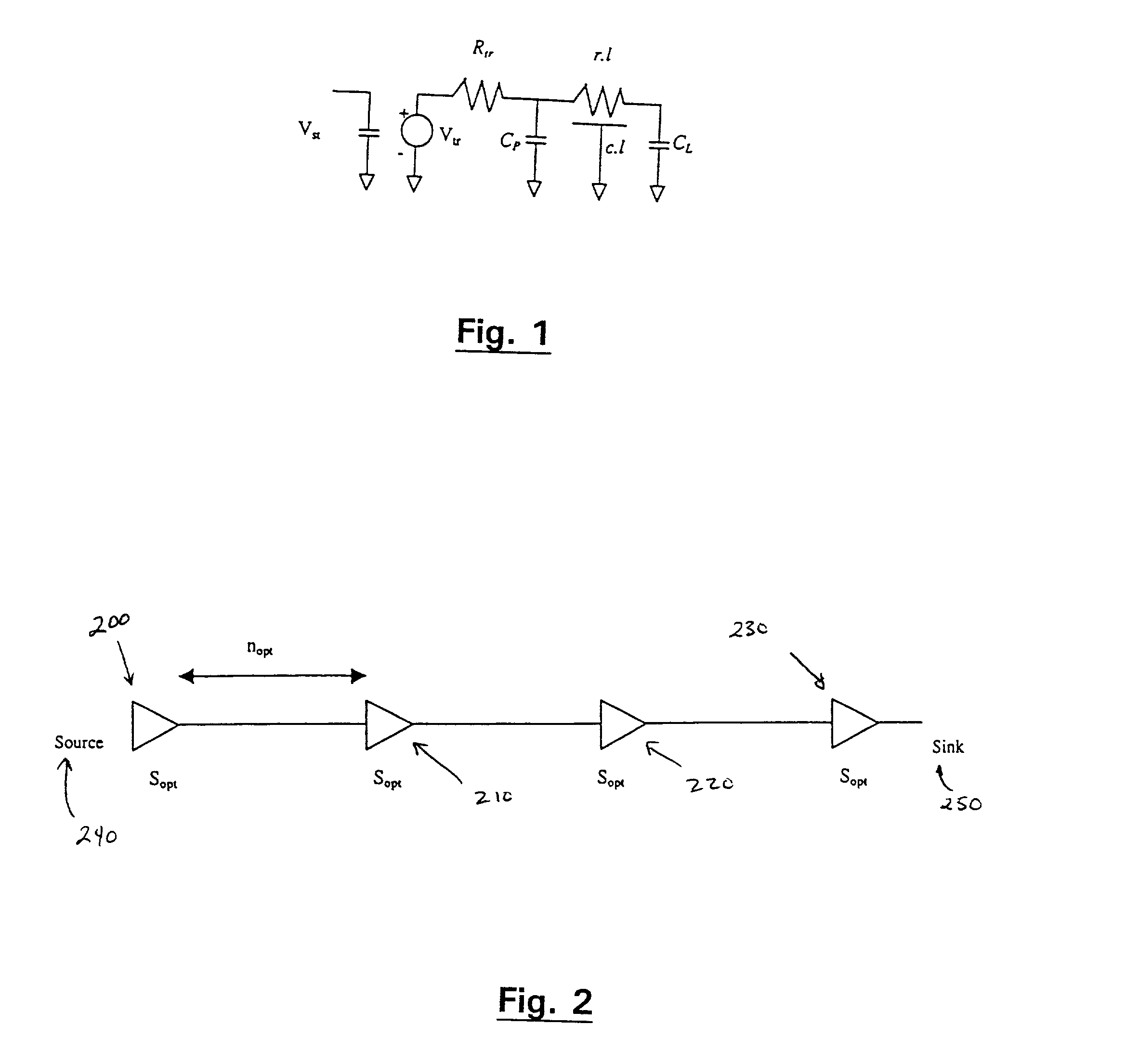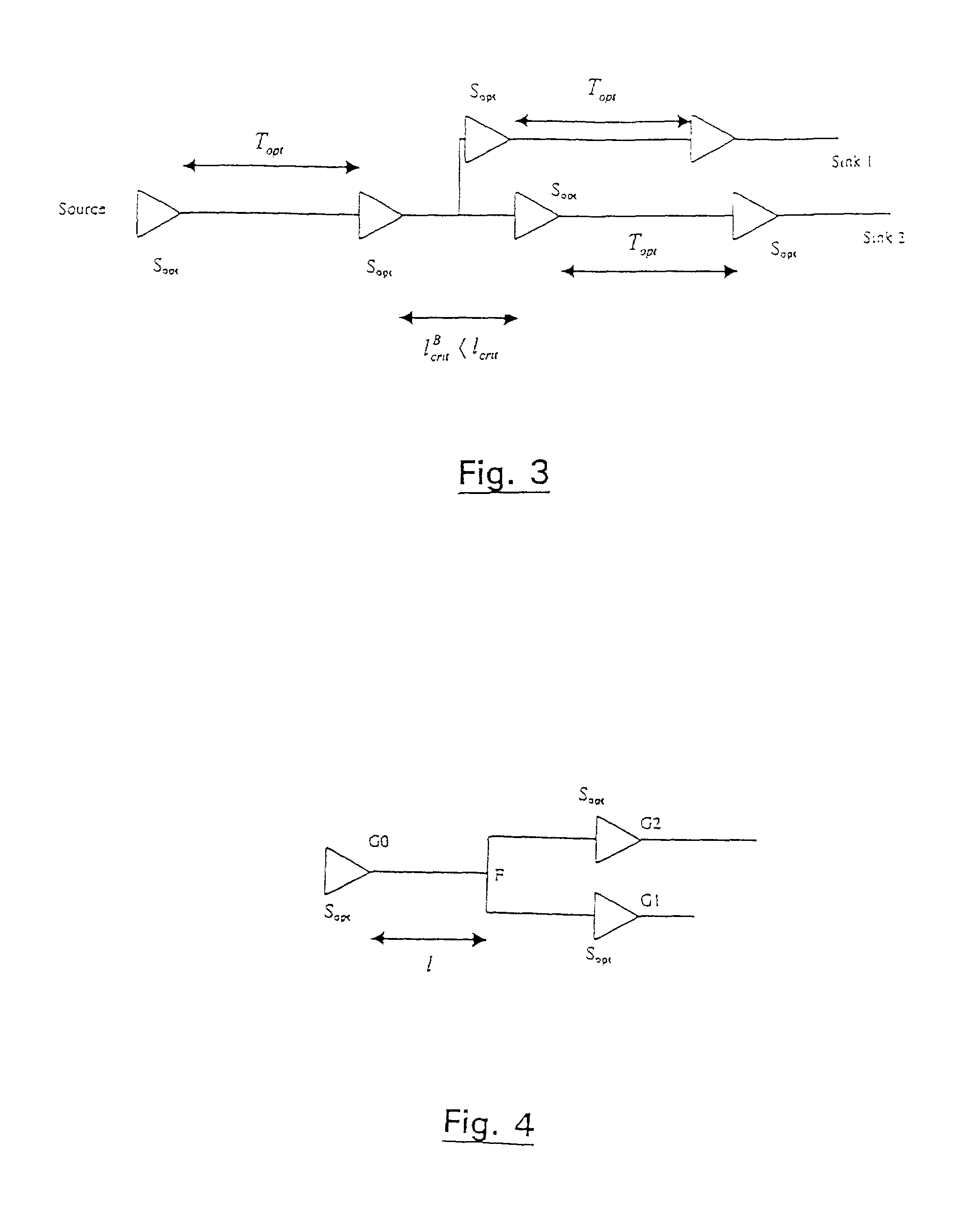Insertion of repeaters without timing constraints
a repeater and wire technology, applied in repeater circuits, line-transmission details, instruments, etc., can solve the problems of all design technology areas hitting a brick wall, affecting the continuation of the industry's historical success, and affecting the timing performance of the net, so as to boost the timing performance and boost the timing performance
- Summary
- Abstract
- Description
- Claims
- Application Information
AI Technical Summary
Benefits of technology
Problems solved by technology
Method used
Image
Examples
Embodiment Construction
[0029]The following description is provided to enable any person skilled in the art to make and use the invention and sets forth the best modes contemplated by the inventor for carrying out the invention. Various modifications, however, will remain readily apparent to those skilled in the art, since the basic principles of the present invention have been defined herein specifically to provide a method of inserting repeaters in integrated circuit wires, without timing constraints. Any and all such modifications, equivalents and alternatives are intended to fall within the spirit and scope of the present invention.
[0030]In general, the present invention relates to speeding up electrical signals in integrated circuit chips to either improve performance of the chips and / or to alleviate timing violation problems. The design of today's chips involves many iterations in order to get closure on the timing constraint problem. This is due to the lack of tight coupling between the logic synthe...
PUM
 Login to View More
Login to View More Abstract
Description
Claims
Application Information
 Login to View More
Login to View More - R&D
- Intellectual Property
- Life Sciences
- Materials
- Tech Scout
- Unparalleled Data Quality
- Higher Quality Content
- 60% Fewer Hallucinations
Browse by: Latest US Patents, China's latest patents, Technical Efficacy Thesaurus, Application Domain, Technology Topic, Popular Technical Reports.
© 2025 PatSnap. All rights reserved.Legal|Privacy policy|Modern Slavery Act Transparency Statement|Sitemap|About US| Contact US: help@patsnap.com



